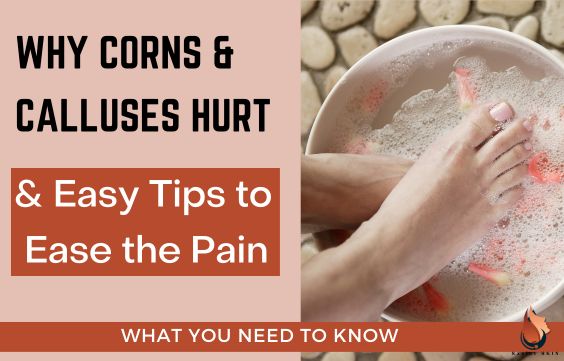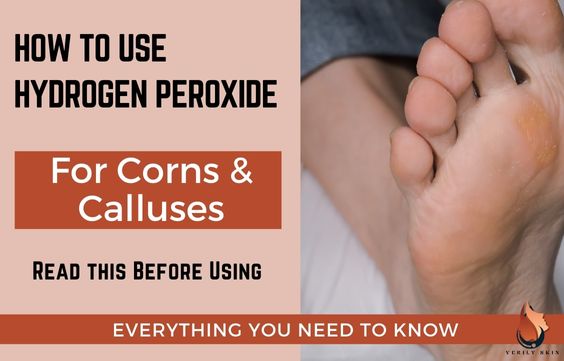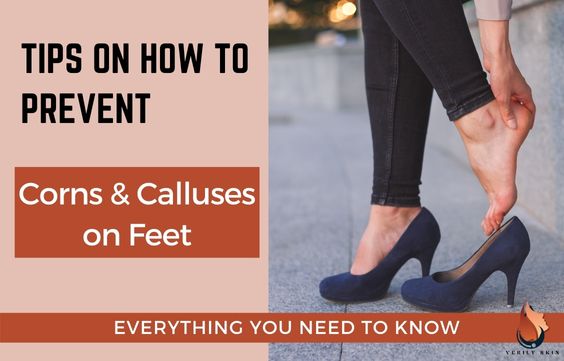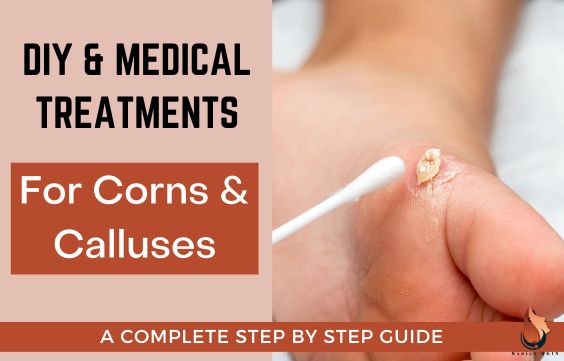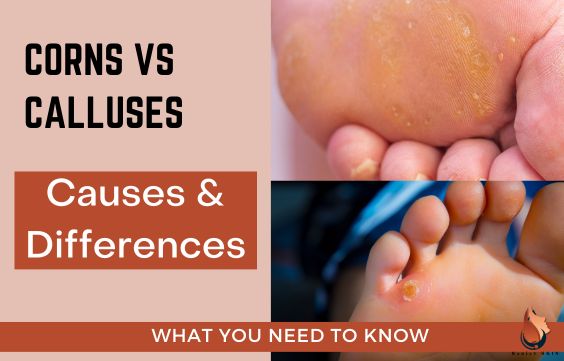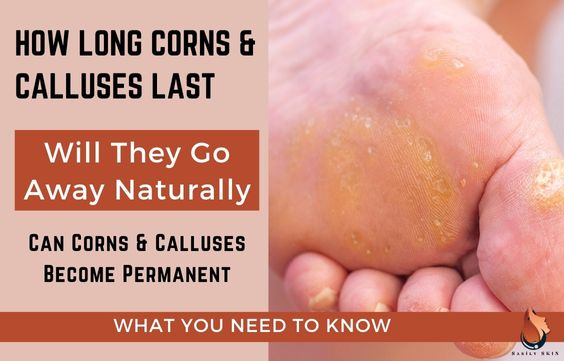Infected Corns & Calluses – How To Spot & Treat
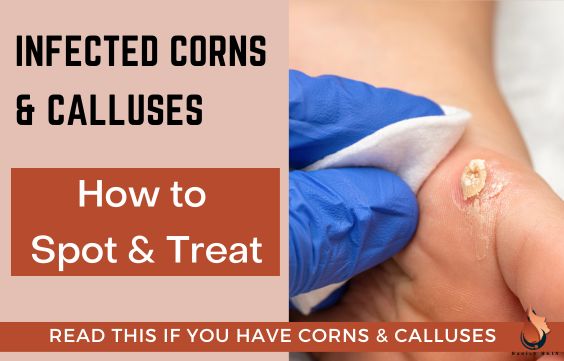
Infected corns & calluses can be very painful and lead to deeper infections if not treated.
The areas where pressure and weight are most applied (like the bottoms of our feet) can become cracked when the skin gets too thick. These cracks can become deep and filled with moisture, sweat, dirt, dead skin cells and bacteria.
So, in this article, I will talk about:
- How to recognize infected corns & calluses
- How you can treat them at home
- And, when you will need to see a doctor
Related Articles:
Corns & Calluses: Quick Remedies & Medical Treatments
Why Do Corns & Calluses Hurt & Easy Tips to Ease the Pain
Corns vs Calluses – What are the Differences & Types
How To Spot Infected Corns & Calluses
The main signs of an infected corn or callus are:
- Redness,
- Swelling more than usual,
- Intense pain,
- Oozing, and Difficulty using the area.
While these signs and symptoms may seem like regular ones that accompany normal corns and calluses, they are more intense.
If you have an infected corn, it will be much more red, painful, and swollen than usual. Any contact with materials will produce a burning, irritating sensation, and the area will be hot to the touch. It will get progressively worse.
If you have a very thickened callus that becomes cracked you might see some bleeding, oozing, redness, and swelling. The cracks and surrounding area will also be swollen and very tender or painful. The cracks will get deeper and the pain will get worse until treated.
Related Articles:
Tips on How to Prevent Calluses on Your Hands
7 Tips on How to Prevent Calluses & Corns on Your Feet
How To Manage Infected Corns & Calluses At Home
I only recommend that you treat mild infections at home. The first step to treating mildly-infected corns & calluses is to clean the area and lessen the pain so that you can debride the thickened skin.
To reduce the infection and lessen pain, clean the corn or callus with warm saltwater. Then apply a topical antibiotic cream or lotion to the area. These can be purchased OTC at any pharmacy. You may need to do this daily until the pain and infection get better.
When the area is no longer so painful, soak and moisturize it for a few days to soften the thickened skin. Keep applying your antibiotic cream or ointment.
When you think the area has been softened enough, soak it again. Then use a pumice stone to gently file away the thickened, dead skin. Remember to do this gradually to avoid removing too much skin. You should not see any bleeding.
When you have finished filing, wash the area with clean water and dry it well. Then apply your antibiotic cream and some moisturizer.
Reapply your antibiotic and moisturizer every day (1-3 times) until the area is healed up. Regularly soak and file down corns & calluses.
With cracked calluses, you can file and debride the thickened skin to get rid of the cracks. Cracks that run deeper into the skin should heal up as the infection also heals up.
Related Articles:
How Long Calluses & Corns Last & Do They Go Away Naturally
Best Essential Oils & Body Oils to Treat Corns & Calluses
When Do You Need To See A Doctor
If you are cleaning, filing, and treating your corns & calluses and they are getting worse or not getting better, then you will need to see a doctor.
If the area looks and feels like an abscess, you should not drain it at home. See a doctor.
Thickened corns & calluses that cannot be debrided with a pumice stone will need to be manually debrided. This is done using surgical blades and other professional tools. In this case, you should see a doctor. DO NOT attempt to cut or shave corns & calluses at home.
If the corn or callus is on an area that is difficult to reach, is VERY thickened, and/or you can see blood and pus, do not attempt to treat it at home. A podiatrist will need to debride the area and get the pus out.
Also, if you notice that pain, swelling, and oozing get worse instead of better, you need to see a doctor.
Video: Lexington Podiatry – Callus Trim Reveals Infection
If you have a known condition like diabetes, skin conditions like eczema or psoriasis, or physical conditions like hammertoe or bunions, then you should not attempt to treat infected corns & calluses at home. See a professional that is trained to safely treat these kinds of conditions to avoid making the situation worse.
Depending on how bad the infection is you may also need to be prescribed oral antibiotic medication. These will help the body to heal the infection from the inside.
How Long Will Infected Corns & Calluses Take To Heal
How long an infected corn or calluses will take to get better will depend on how bad it is and how well you can treat it yourself.
Some can get significantly better in days while others may take weeks.
Complications Of Untreated Infected Corns & Calluses
If infected corns & calluses remain untreated they can eventually lead to:
- Deeper tissue infections
- Bone infections
- Blood infections and sepsis
- And even infection of the bones, muscles, and tissue further up along your hands or feet
Related Articles:
Salicylic Acid for Calluses & Corns: What You Need to Know
Hydrogen Peroxide for Corns & Calluses: How to Safely Use
Apple Cider Vinegar For Corns & Calluses – What To Know
Sources
Infected Corn on Foot: Signs and Symptoms of an Infection and How to Treat It

